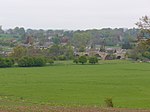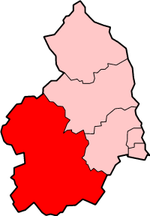Humshaugh railway station
1858 establishments in England1958 disestablishments in EnglandDisused railway stations in NorthumberlandFormer North British Railway stationsNorth East England railway station stubs ... and 5 more
Pages with no open date in Infobox stationRailway stations in Great Britain closed in 1956Railway stations in Great Britain opened in 1858Use British English from August 2017Wall, Northumberland

Humshaugh railway station served the village of Chollerford, Northumberland, England from 1858 to 1958 on the Border Counties Railway.
Excerpt from the Wikipedia article Humshaugh railway station (License: CC BY-SA 3.0, Authors, Images).Humshaugh railway station
Military Road,
Geographical coordinates (GPS) Address External links Nearby Places Show on map
Geographical coordinates (GPS)
| Latitude | Longitude |
|---|---|
| N 55.029 ° | E -2.125 ° |
Address
Humshaugh
Military Road
NE46 4EN
England, United Kingdom
Open on Google Maps








